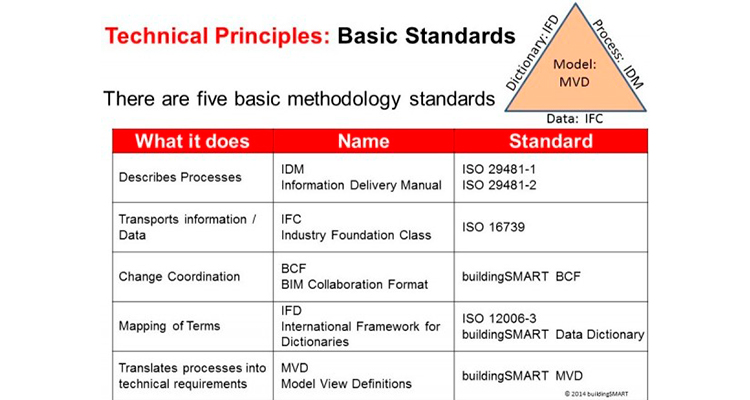To standardize or not to standardize
Standardisation on BIM is essential because different applications require sharing information in different formats

buildingSMART’s technical core is based around a common data schema (model) called Industry Foundation Classes (IFC) that makes it possible to hold and exchange relevant data between different software applications. Each buildingSMART International Standard will be translated into an ISO and CEN standard.
European Committee for Standardisation (CEN) is a technical committee on the European level that develop and maintain standards in the BIM domain.
BIM Manuals are emerging in Europe
Standardisation of workflows is desirable within manufacturing and prefabrication industries where the same products are generated repetitively, however there is less clarity whether this definition is applicable to BIM processes within AEC industry.
However, the existence of standards worldwide is testament to the need to standardize what we in the AEC industry have been doing for centuries. The latitude those standards allow, and the lax enforcement of those standards from one office another demonstrates the difficulty of setting standards for conveying information that everyone can live with all of the time. That’s why some prefer guidelines only.
Today the larger contracting companies employ standardized BIM Manuals when procuring design services. They set out particular demands on BIM Authors (the design team) categorised into general requirements and project-specific, and may include modeling guidelines pertaining to particular BIM Uses.
What is within these so called organisation specific BIM Manuals that may be standardized to the benefit of the wider industry? Other studies consider the positioning and impact of a broad range of existing national BIM guideline documents and standards worldwide.
Impact of discrete in-house BIM Manuals which are emerging in Europe as a response to a lack of leadership in BIM adoption may have an adverse effect on the competitiveness. Furthermore, because many BIM practice procedures are hidden within organisation’s discrete BIM Manuals, with restricted audiences, we may run a real risk of developing a constellation of fragmented.
Many industry practitioners consider a lack of standards a major obstacle to the effective utilisation of ICT in construction. The same survey reveals Architects invest the most amongst consultants in BIM and drive comes mostly from enthusiastic individuals (bottom-up) as opposed to management (top-down).












